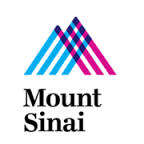Deviating the Esophagus in Atrial Fibrillation Ablation
| Status: | Terminated |
|---|---|
| Conditions: | Atrial Fibrillation, Gastrointestinal |
| Therapuetic Areas: | Cardiology / Vascular Diseases, Gastroenterology |
| Healthy: | No |
| Age Range: | 18 - 80 |
| Updated: | 1/25/2018 |
| Start Date: | November 2011 |
| End Date: | December 2015 |
Esophageal Deviation in Atrial Fibrillation Ablation: A Randomized Control Trial
In this randomized double-blind study, the investigators would like to compare standard
practice (i.e., use of luminal esophageal temperature monitoring) to that of esophageal
deviation during AF ablation. The investigators hypothesize that the strategy of esophageal
deviation will result in safer ablation strategy with a reduction in the incidence of
esophageal injury as assessed by endoscopy.
practice (i.e., use of luminal esophageal temperature monitoring) to that of esophageal
deviation during AF ablation. The investigators hypothesize that the strategy of esophageal
deviation will result in safer ablation strategy with a reduction in the incidence of
esophageal injury as assessed by endoscopy.
Catheter ablation is a commonly performed strategy employed for the treatment of atrial
fibrillation. However ablation in the posterior wall of the left atrium can cause thermal
injury to the esophagus. When significant thermal injury to the esophagus occurs, two
significant complications can occur: 1) the formation of an atrio-esophageal fistula, and 2)
gastrointestinal dysmotility. While the former is rate, it is an important complication since
it can be fatal. The frequency of the latter complication is less well appreciated, but
probably occurs in the range of 1:100 to 1:500. Currently luminal esophageal temperature
monitoring is the most commonly employed modality to prevent such injury. However, there are
limitations to its use, and atrio-esophageal fistulas have been reported even when using
esophageal temperature monitoring. Esophageal deviation using either a TEE or EGD probe has
been described in the literature, but the effectiveness and practicality of these techniques
are suboptimal, and have therefore precluded their use in routine clinical practice.
Recently, we have demonstrated that esophageal deviation is indeed possible using
off-the-shelf equipment (a soft thoracic tube and endotracheal stylet) in patients undergoing
AF ablation. In this randomized double-blind study, we will compare standard practice (i.e.,
use of luminal esophageal temperature monitoring) to esophageal deviation during AF ablation.
We hypothesize that the strategy of esophageal deviation will result in safer ablation
strategy with a reduction in the incidence of esophageal injury as assessed by endoscopy.
fibrillation. However ablation in the posterior wall of the left atrium can cause thermal
injury to the esophagus. When significant thermal injury to the esophagus occurs, two
significant complications can occur: 1) the formation of an atrio-esophageal fistula, and 2)
gastrointestinal dysmotility. While the former is rate, it is an important complication since
it can be fatal. The frequency of the latter complication is less well appreciated, but
probably occurs in the range of 1:100 to 1:500. Currently luminal esophageal temperature
monitoring is the most commonly employed modality to prevent such injury. However, there are
limitations to its use, and atrio-esophageal fistulas have been reported even when using
esophageal temperature monitoring. Esophageal deviation using either a TEE or EGD probe has
been described in the literature, but the effectiveness and practicality of these techniques
are suboptimal, and have therefore precluded their use in routine clinical practice.
Recently, we have demonstrated that esophageal deviation is indeed possible using
off-the-shelf equipment (a soft thoracic tube and endotracheal stylet) in patients undergoing
AF ablation. In this randomized double-blind study, we will compare standard practice (i.e.,
use of luminal esophageal temperature monitoring) to esophageal deviation during AF ablation.
We hypothesize that the strategy of esophageal deviation will result in safer ablation
strategy with a reduction in the incidence of esophageal injury as assessed by endoscopy.
Inclusion Criteria:
- Age >18 - Age < 80 yr
- Documentation of atrial fibrillation (AF)
- Referred for a first ever ablation procedure for AF (prior ablation of right-sided
Typical flutter, or "limited" left-sided of an accessory pathway are permitted)
- General anesthesia
- All patients must understand and adhere to the requirements of the study and be
willing to comply with the post study follow-up requirements.
Exclusion Criteria:
- Any reversible cause of AF (post-surgery, thyroid disorder, etc.)
- INR > 4.0 at the time of the procedure
- H/o of severe esophageal ulcers, strictures, esophagitis or GERD
- H/o Esophageal Surgery
- Prior surgical or catheter ablation procedure for AF (except right atrial flutter
ablation)
- Any evidence of esophageal diverticulum or other structural abnormalities of the
esophagus seen during baseline barium esophagogram
- Significant abnormality on Swallowing Impairment Score
- Mental impairment precluding signing consent or completing follow up
- Patients with any other significant uncontrolled or unstable medical condition
- Women who are known to be pregnant or have had a positive β-HCG test 7 days prior to
procedure
We found this trial at
4
sites
Click here to add this to my saved trials
Click here to add this to my saved trials
Icahn School of Medicine at Mount Sinai Icahn School of Medicine at Mount Sinai is...
Click here to add this to my saved trials
Florida Hospital Florida Hospital is one of the country
Click here to add this to my saved trials


